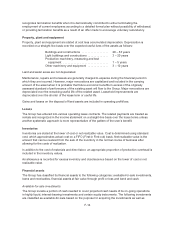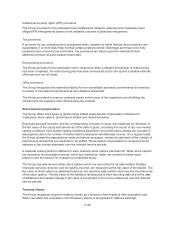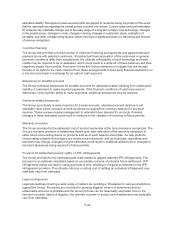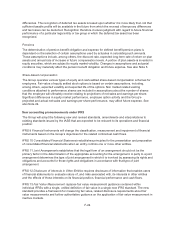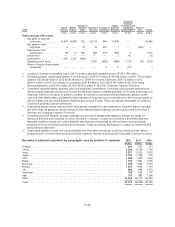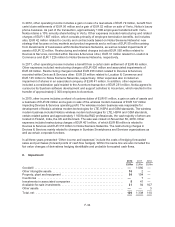Nokia 2012 Annual Report Download - page 225
Download and view the complete annual report
Please find page 225 of the 2012 Nokia annual report below. You can navigate through the pages in the report by either clicking on the pages listed below, or by using the keyword search tool below to find specific information within the annual report.differences. The recognition of deferred tax assets is based upon whether it is more likely than not that
sufficient taxable profits will be available in the future from which the reversal of temporary differences
and tax losses can be deducted. Recognition therefore involves judgment with regard to future financial
performance of a particular legal entity or tax group in which the deferred tax asset has been
recognized.
Pensions
The determination of pension benefit obligation and expense for defined benefit pension plans is
dependent on the selection of certain assumptions used by actuaries in calculating such amounts.
Those assumptions include, among others, the discount rate, expected long-term rate of return on plan
assets and annual rate of increase in future compensation levels. A portion of plan assets is invested in
equity securities, which are subject to equity market volatility. Changes in assumptions and actuarial
conditions may materially affect the pension benefit obligation and future expense. See also Note 5.
Share-based compensation
The Group operates various types of equity and cash-settled share-based compensation schemes for
employees. Fair value of equity settled stock options is based on certain assumptions, including,
among others, expected volatility and expected life of the options. Non market related vesting
conditions attached to performance shares are included in assumptions about the number of shares
that the employee will ultimately receive relating to projections of net sales and earnings per share.
Significant differences in equity market performance, employee option activity and the Group’s
projected and actual net sales and earnings per share performance, may affect future expense. See
also Note 24.
New accounting pronouncements under IFRS
The Group will adopt the following new and revised standards, amendments and interpretations to
existing standards issued by the IASB that are expected to be relevant to its operations and financial
position:
IFRS 9 Financial Instruments will change the classification, measurement and impairment of financial
instruments based on the Group’s objectives for the related contractual cash flows.
IFRS 10 Consolidated Financial Statements establishes principles for the presentation and preparation
of consolidated financial statements when an entity controls one or more other entities.
IFRS 11 Joint Arrangements establishes that the legal form of an arrangement should not be the
primary factor in the determination of the appropriate accounting for the arrangement. A party to a joint
arrangement determines the type of joint arrangement in which it is involved by assessing its rights and
obligations and accounts for those rights and obligations in accordance with that type of joint
arrangement.
IFRS 12 Disclosure of Interests in Other Entities requires disclosure of information that enables users
of financial statements to evaluate nature of, and risks associated with, its interests in other entities
and the effects of those interests on its financial position, financial performance and cash flows.
IFRS 13 Fair Value Measurement replaces fair value measurement guidance contained within
individual IFRSs with a single, unified definition of fair value in a single new IFRS standard. The new
standard provides a framework for measuring fair value, related disclosure requirements about fair
value measurements and further authoritative guidance on the application of fair value measurement in
inactive markets.
F-24


